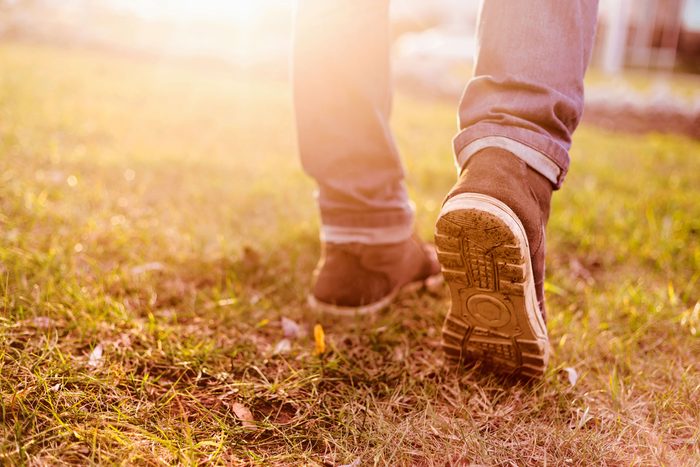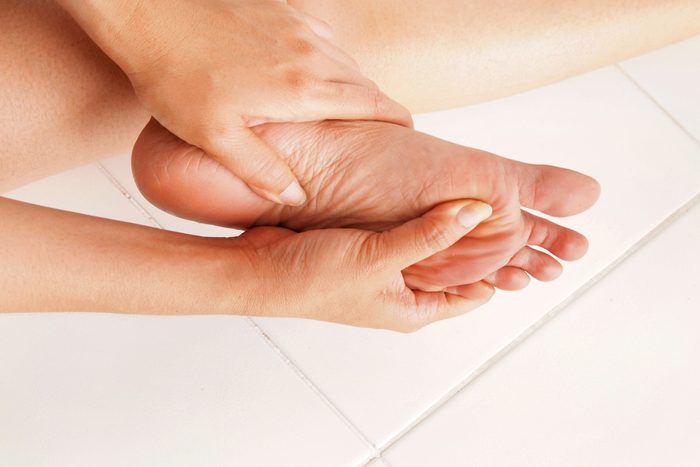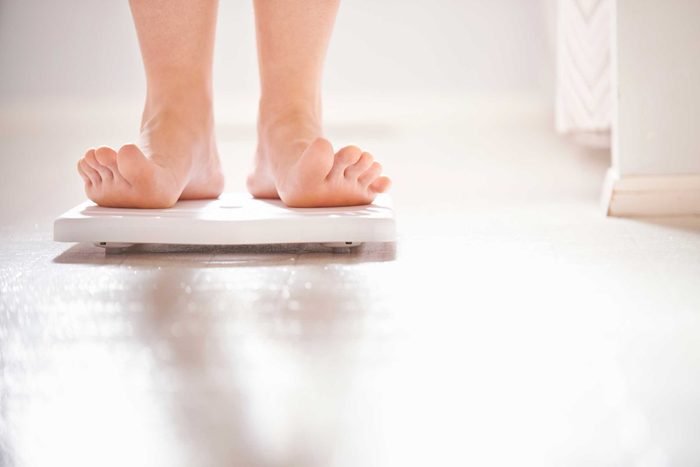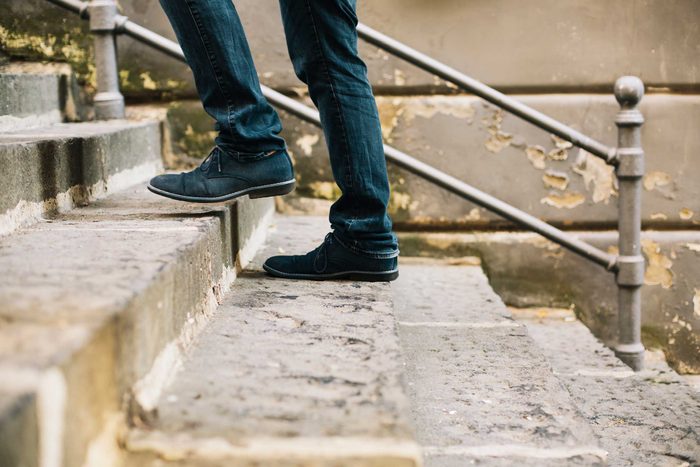
Your feet’s shocks get worn out
That’s the crux of plantar fasciitis—pronounced fashee-EYE-tiss. The ligament that runs along the bottom of your foot (called the plantar fascia) and connects from your toes to your heel, supports the arch of your foot and helps absorb the shock as you walk, jog, or run. The condition, plantar fasciitis, involves a strain to this ligament from overuse, says Paul Greenberg, DPM, a foot and ankle specialist at NYU Langone in New York City. “It’s probably the most common condition that any foot specialist sees,” he says. “Most of the time, symptoms occur where the ligament attaches to the heel.” In other words, you’ll likely first notice it as discomfort in bottom of the foot, back by the heel.

You feel a sharp pain first thing in the morning
This one is far from “silent,” but pretty specific to plantar fasciitis. The pain is usually the worst after you get out of bed and take your first few steps—or after you’ve been sitting for hours and finally get up to move around, says Greenberg. Dubbed post-static dyskinesia, you’ll feel more discomfort after periods of rest because of an uptick of inflammatory cells settling in that area. It should feel better with low-key activity, but sometimes the pain can stick around. If that’s the case, the first line of treatment is usually stretching and anti-inflammatory meds, according to Greenberg. Check out these four stretches for plantar fasciitis.

You’re overweight
Extra pounds = more stress on your feet, so your risk for plantar fasciitis does increase if you’re overweight. It can also exacerbate the symptoms, says Greenberg. Give your feet extra support with any of these best shoes for plantar fasciitis.

You have a stand-out foot structure
If you have high arches, you could be more at risk of plantar fasciitis, as the ligament has to work harder to support you, Greenberg explains. Also, if you pronate (or your foot rolls inward) as you walk or run, the foot collapses and that puts extra pressure on the bottom of your feet, upping your chances of experiencing this heel pain. A little further up the leg, your calf impacts your risk as well. If the muscle is tight, it can lead to issues. Here’s how to foam roll your calves and other areas of the body.

You stand on your feet all day
Just as being inactive can cause heel pain to flare up, so can standing on your feet all day, says Greenberg. Whether you’re standing at a desk, walking around, or you rapidly increase physical activity, you can up your chances of getting plantar fasciitis.

You live in flip flops
Those ballet flats you switch to when it’s chillier out are no better than flip-flops, either. As cute as they may be, these shoes don’t offer the support your feet need. “Look for a shoe with a drop—where the heel is slightly higher than the front of the shoe,” Greenberg recommends. Also, the counter of the shoe, or the cup back by the heel, should also offer support to prevent pronation, he says. Be sure to check out the best shoes for heel pain to get the best support.

You’re a runner
This kind of exercise puts a lot of stress on your feet, especially if you run on hard surfaces, like concrete. Other activities, such as Zumba or even walking for long distances, can contribute to your chance of developing plantar fasciitis. Lower-impact exercises, such as swimming or bicycling, can ease heel pain. Make sure you wear supportive shoes, stretch out your calves frequently, and don’t increase your mileage too quickly—all of which will strain the foot, says Greenberg. These surprising shoe mistakes could be killing your feet.
